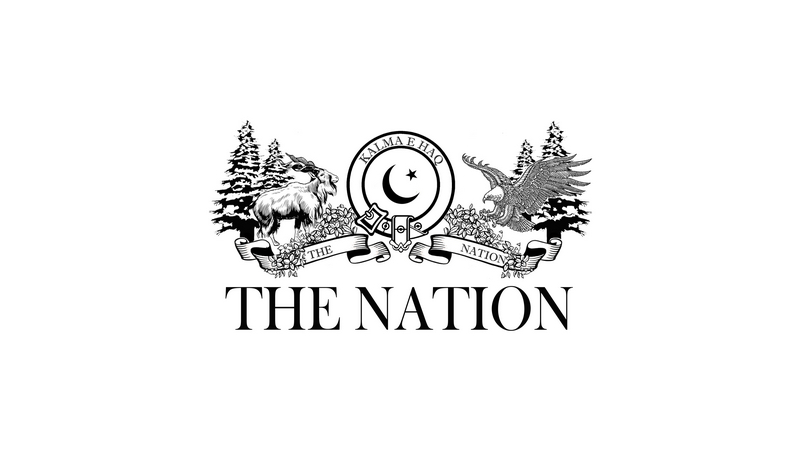They say nature never lies, and if one stands atop the misty meadows of Pahalgam in Occupied Kashmir, the silence says more than the bulletins from Delhi ever could. April 22, 2025, wasn’t just another day scarred by violence; it was another carefully choreographed act in a theatre where tragedy is weaponized, innocence is manipulated, and truth is a casualty. As the world feigned concern, the Indian media launched its familiar chorus: blame Pakistan, amplify fear, politicize grief.
The rapidity with which New Delhi pointed fingers within minutes of the attack on tourists was not an instinct born of concern but a reflex born of experience. In the Indian playbook, outrage precedes inquiry, and culpability is assigned before any forensic assessment even begins. While flames still licked the valley floor and tourists scrambled for safety, Indian social media handles aligned with the intelligence apparatus had already launched into overdrive.

The hashtags weren’t about mourning; they were war drums. The timing was not a coincidence it never is. US Vice President JD Vance was in India for a crucial diplomatic visit, while Prime Minister Narendra Modi had just returned from negotiations in Saudi Arabia.
This synchronization of bloodshed with diplomacy wasn’t a lapse in security it was strategy by design. It’s a page torn from an old manuscript that India has written and rewritten since 2007. Strict security measures enforced for PMA president’s parade, section 144 imposed The anatomy of this Pahalgam attack bears uncanny resemblance to past instances where India accused Pakistan within hours, only for investigations when allowed to later crumble under the weight of truth.
In the 2007 Samjhauta Express bombing, 68 innocents perished, and Pakistan was instantly vilified. Yet the subsequent investigation exposed the involvement of Lt. Col.
Shrikant Purohit and members of Abhinav Bharat, a right-wing Hindu extremist group. The narrative flipped, but the damage was done. Then came Mumbai, 2008 an assault that earned India global sympathy and Pakistan global suspicion.
Years later, Satish Verma, a former Central Bureau of Investigation officer, claimed it was orchestrated to enact counterterrorism laws and manipulate elections. By 2018, another election loomed, and Kerala tourists were attacked in Kashmir. No arrests, no real answers just recycled fury.
And who could forget Pulwama, 2019, where 40 CRPF personnel were killed? The country wept, but facts were soon buried. Satya Pal Malik, the former Governor of IIOJK, revealed security lapses and the government’s refusal to provide air transport despite intelligence warnings. That revelation, however, came after the elections were won and Pakistan had already been demonized.
Again in 2023, Rajouri burned, five soldiers were killed, and the Bharatiya Janata Party (BJP) seized upon the tragedy as a rallying cry. No one questioned how terrorists could operate freely in a region with 700,000 troops, multiple intelligence agencies, facial recognition, and constant drone surveillance. Pahalgam now joins this bleak register of manipulated martyrdom.
JKT opens ICT and STEM labs for girls in Khanewal What’s striking is the complicity of Indian media, which has shifted from investigative journalism to state-backed propaganda. In the aftermath of each attack, facts are ignored, and hysteria takes over. Anchors don’t seek evidence; they call for war.
Rational voices are labeled traitors, and calls for international investigation are dismissed. Despite Pakistan’s repeated offers for joint inquiries, India refuses to cooperate. The silence of the international community is not only deafening it is complicit.
In an age when satellite imagery can identify a car license plate from space, the world’s reluctance to investigate India’s pattern of false flag operations is not due to ignorance, but indifference. Trade relationships, defense contracts, and strategic partnerships have all bought New Delhi a disturbing level of impunity. Human rights organizations occasionally release criticisms of the abuses in Kashmir, but these statements remain little more than footnotes in the broader narrative of global geopolitics.
Meanwhile, ordinary Kashmiris pay the price trapped in a landscape of barbed wire and broken promises. The United Nations has documented systemic abuses in the region, from enforced disappearances to torture, yet concrete action remains elusive. As India hosts global summits and postures as the world’s largest democracy, the valley bleeds silently beneath layers of manufactured narratives.
Pahalgam’s victims are not only the slain tourists, but the truth itself buried beneath a rubble of jingoism and selective outrage. Until the world dares to look beyond the surface and examine India’s false flag playbook with the seriousness it demands, justice will remain a casualty. Motorcyclists kill woman In this orchestrated theater of violence, India has perfected the use of narrative as a strategic weapon.
The goal is threefold: frame Pakistan as a perpetual villain, distract from the chaos in Kashmir, and galvanize domestic support through fear and manufactured rage. It is the classic playbook of authoritarian populism. But there is a deeper tragedy unfolding.
Each false flag attack chips away at the possibility of peace in South Asia. Each silence by the global community endorses a dangerous precedent that states can murder truth with impunity if their economy is strong enough or their markets lucrative enough. It is a perilous illusion, for the world cannot afford to look away.
The attack in Pahalgam must be viewed not as a standalone tragedy but as a strategic maneuver in a long-standing information war. To ignore this is to endorse it. If the world remains unmoved, the consequences will not remain confined to one valley.
They will ripple outward, staining not just the conscience of a region, but of a world that chose convenience over courage. This is no longer just a South Asian problem it is a global one. And it demands a reckoning.
AC takes notice of BISP Scam Omay Aimen The writer frequently contributes to issues concerning national and regional security, focusing on matters having a critical impact on these milieus. She can be reached at [email protected] Tags: manipulating truth power.
Politics

Manipulating Truth for Power

They say nature never lies, and if one stands atop the misty meadows of Pahalgam in Occupied Kashmir, the silence says more than the bulletins from Delhi ever could.















